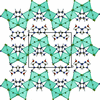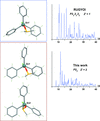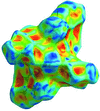issue contents
February 2018 issue

Cover illustration: Crystal engineering, the conception and synthesis of molecular solid-state structures, is fundamentally based upon the discernment and subsequent exploitation of intermolecular interactions, to obtain new solid forms with tailored properties. One of the many possible applications is the stabilization of explosive materials by co-crystallization. In the present paper, the authors have synthesized four new charge-transfer co-crystals of the shock- and heat-sensitive trinitrobenzene (TNB) with various polycyclic aromatic hydrocarbons and studied the weak interactions stabilizing their crystal structures. See: Hill, Levendis & Lemmerer [Acta Cryst. (2018). E74, 113-118].
research communications
















































































 journal menu
journal menu

























































